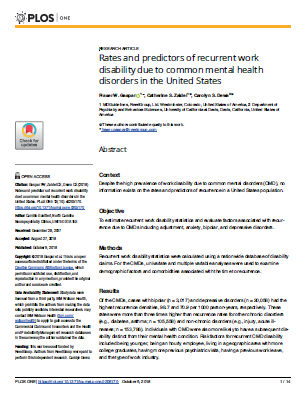Context
The use of clinical-practice guidelines is a suggested method for improving health outcomes by the earlier provision of necessary and effective medical interventions.
Objective
To quantify the influence of adherence to guideline-recommended interventions in the first week of treatment for an initial low back pain (LBP) injury on lost workdays.
Methods
In a retrospective cohort of California’s workers’ compensation claims data from May 2009 to May 2018, 41 diagnostic and treatment interventions were abstracted from the medical claims for workers with acute LBP injuries and compared with guideline recommendations. Lost workdays within 1-year post-injury were compared by guideline adherence using quantile regressions.
Results
Of the 59,656 workers who met the study inclusion criteria, 66.1% were male and the average (SD) age was 41 (12) years. The median number (IQR) of lost workdays was 27 (6– 146) days. In the first week of treatment, 14.2% of workers received only recommended interventions, 14.6% received only non-recommended interventions, and 51.1% received both recommended and non-recommended interventions. Opioid prescriptions fell 86% from 2009 to 2018. Workers who received only guideline-recommended interventions experienced significantly fewer lost workdays (11.5 days; 95% CI: -13.9, -9.1), a 29.3% reduction, than workers who received only non-recommended interventions. The percentage of workers receiving only recommended interventions increased from 10.3% to 18.2% over the 9 years.
Conclusion and relevance
When workers received guideline-recommended interventions, they typically returned to work in fewer days. The majority of workers received at least one non-recommended intervention, demonstrating the need for adherence to guideline recommendations. Fewer lost workdays and improved quality care are outcomes that strongly benefit injured workers.

